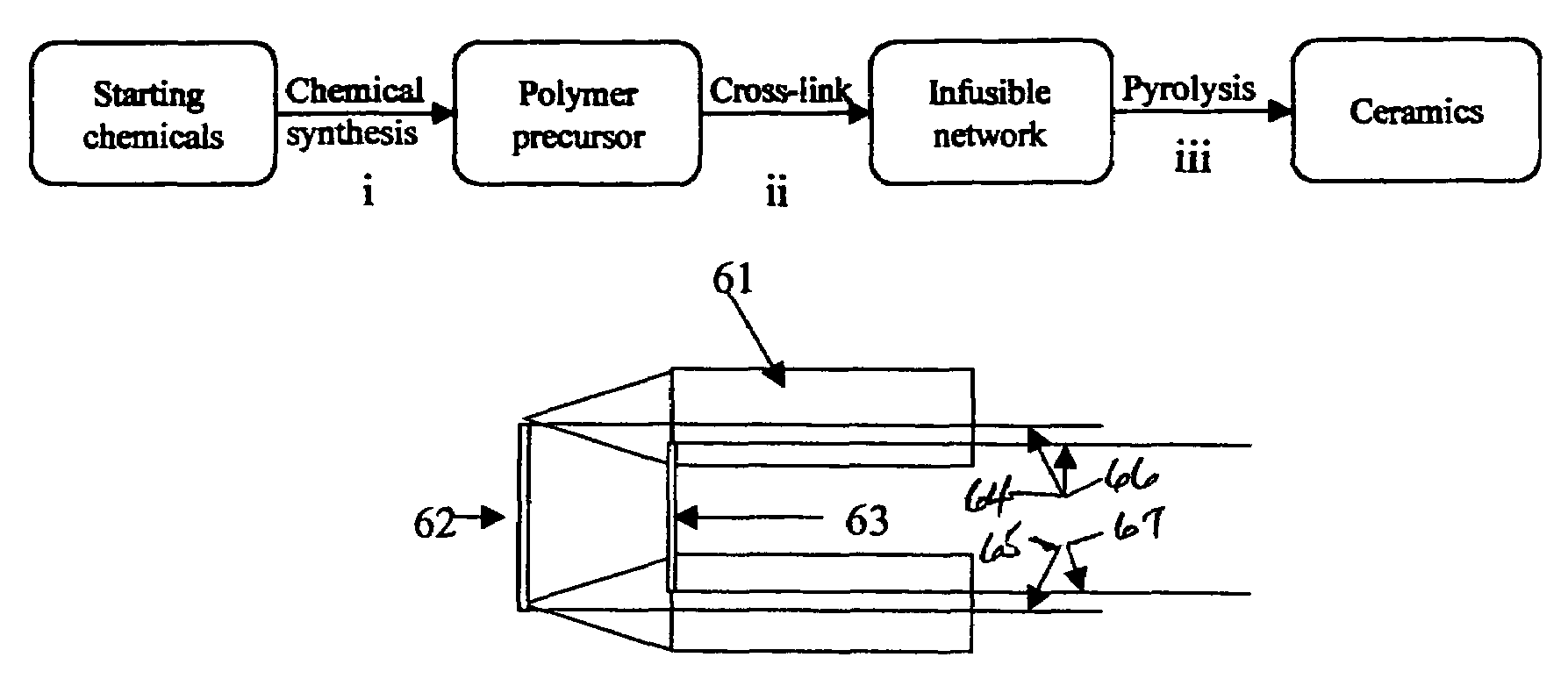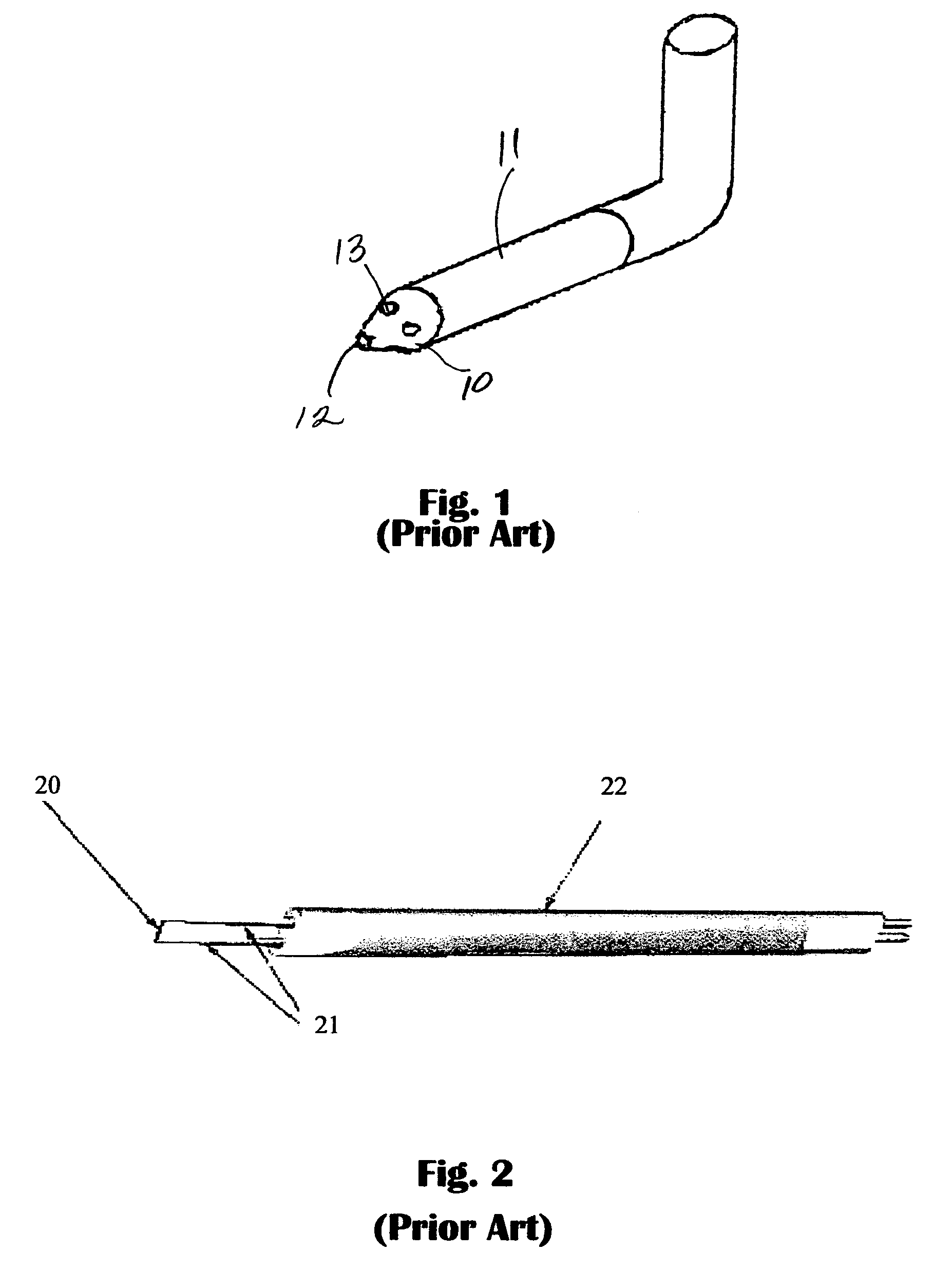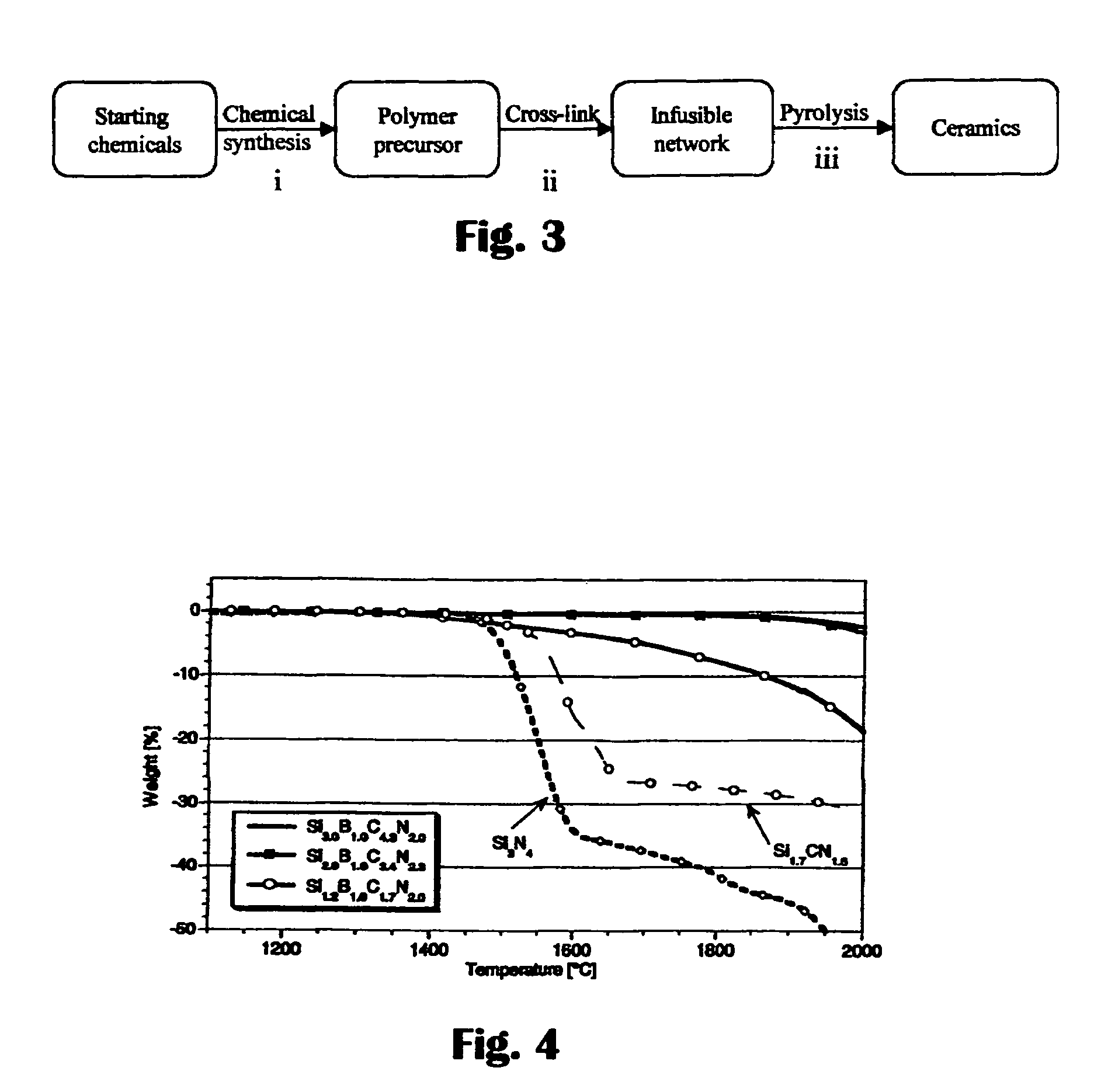Ultra-high temperature micro-electro-mechanical systems (MEMS)-based sensors
- Summary
- Abstract
- Description
- Claims
- Application Information
AI Technical Summary
Benefits of technology
Problems solved by technology
Method used
Image
Examples
first embodiment
[0071]As the present invention, a wall shear sensor, also known as a floating element shear sensor, is shown in FIG. 7A. The design consists of a floating plate or element 30, eight tethers 31 and conducting wires 32 for connection. Four of the tethers sense any movement in the floating element due to side-to-side shear and the other four tethers sense any movement due to up-down shear. See the top view shown in FIG. 7B. The tethers work as mechanical supports for the plate as well as piezo-resistive resistors in the sensing-transduction scheme. For measurement shear in any direction, two of the four shear experience tension and the other two compression. Because of the piezo-resistive property of the material, the resistance of each tether changes under tension or compression, and this change in resistance is measured through a half-bridge configuration (as in strain gauges). A half-bridging electrical configuration assuming matched resistance, the output, ΔV, is given by
[0072]ΔV...
second embodiment
[0073]A second embodiment, a wall pressure sensor, technically known as a simple piezo-resistive pressure sensor, is shown in FIGS. 8A and 8B. As in the wall shear sensors, the piezo resistive property of the base material is the key enabling factor for this ultra-high temperature sensor. Piezo resistive pressure sensor consists of a diaphragm 40, a sealed cavity 41, two piezo resistive strain gauges 42, 43 and conducting connections 44. Another two unloaded strain gauges would be mounted inside the sealed cavity so that they do experience any strain, but do experience the same environmental conditions. These latter two gauges 42, 43 will act as compensators, and all four gauges will operate on a full bridge circuit. Through an array of sensors mounted around the circumference at the combustor exit, pressure pulses can be detected, which is important for monitoring of combustion stability.
third embodiment
[0074]As a third embodiment, the design for a five-hole probe is shown in FIGS. 9A and 9B. A basic, conventional design of a five-hole sensor as described early and shown in FIG. 1, is modified with the inclusion of tip fences. The fences 50 have a conical side view and are described in more details under fabrication. The fences 50 allow the adaptation of ceramic micro-fabrication for the five-hole probe sensor.
[0075]Two side holes 51, 52 provide the yaw angle of the velocity vector, whereas holes above 54 and below 53 the center one 55 provide the pitch angle. All five holes provide together static and stagnation pressures. The design would involve determining all relevant dimensions so that no adverse aerodynamic effect is felt at the measurement tip. The hole and sensor diameters are subject to micro-fabrication limitations, and the frequency response needed. In this design, only mean value of velocity and pressures would be sought with the help of this probe.
PUM
 Login to View More
Login to View More Abstract
Description
Claims
Application Information
 Login to View More
Login to View More - R&D
- Intellectual Property
- Life Sciences
- Materials
- Tech Scout
- Unparalleled Data Quality
- Higher Quality Content
- 60% Fewer Hallucinations
Browse by: Latest US Patents, China's latest patents, Technical Efficacy Thesaurus, Application Domain, Technology Topic, Popular Technical Reports.
© 2025 PatSnap. All rights reserved.Legal|Privacy policy|Modern Slavery Act Transparency Statement|Sitemap|About US| Contact US: help@patsnap.com



